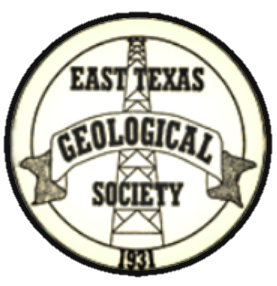FEBRUARY 2021 LUNCHEON MEETING
Bob Loucks
presents
Geologic overview and characterization of the Upper Cretaceous Austin Chalk Trend,
onshore Gulf of Mexico
12:00 PM Wednesday, February 17, 2021
on Zoom
Cost: $10
Students: Free
RESERVATIONS ARE NOW CLOSED. THANK YOU.
ABSTRACT
Geologic overview and characterization of the Upper Cretaceous Austin Chalk Trend,
onshore Gulf of Mexico
Robert Loucks and Chris Zahm
Carbonate Reservoir Characterization Research Laboratory (RCRL) and State of Texas Advanced Resource Recovery (STARR)
Bureau of Economic Geology, The University of Texas at Austin
The Austin Chalk Trend along the onshore Gulf of Mexico is an active exploration and production trend yet little has been published on the detailed reservoir geology. The Carbonate Reservoir Characterization Research Laboratory (RCRL) at the Bureau of Economic Geology, The University of Texas at Austin has undertaken a comprehensive core-based regional investigation of the Austin Chalk for the past five years. The study covers the trend from the Texas-Mexico border through Louisiana. For this study, we have described ~40 cores and a few well-exposed outcrops and we constructed a large interactive database of core and thin-section descriptions, mineralogy XRD data, total organic carbon (TOC) and rock pyrolysis data, porosity and permeability data, SEM analyses, XRF analyses, and unconfined compressive strength (UCS) analyses.
The Austin Chalk is composed of marly chalks to chalky marls along the producing trend and the major biological component is fragments of coccolithophores (algae) that lived in the shallower water column on the deeper open-marine shelf (below storm wave base). Planktic foraminifers are also common. Updip of the producing trend some shallower water components are present such as oysters, echinoid fragments, and benthic foraminifers.
Five general lithofacies were defined that generally describe the Austin Chalk throughout the trend. The burrowed slightly marly chalk was deposited in an oxic setting and minor amounts TOC (< 0.5%). The highly burrowed very marly chalk to chalky marl was deposited in dysoxic conditions and can be TOC-rich (mean of ~1%). The poorly laminated chalky marl is slightly burrowed and was deposited under dysoxic to anoxic conditions and has a mean TOC of ~1.5%. The well-laminated chalky marls were deposited under anoxic conditions and has a mean TOC of ~2%. The last lithofacies is common in South Texas and on the San Marcos Arch and is composed of glauconite-rich debrites interpreted to be to be related to volcanism. In many cores, these lithofacies illustrate an up-section transition from laminated more anoxic lithofacies into burrowed dysoxic to oxic lithofacies.
Variable mineralogy is noted in all the cores. Calcite is the most common component as the chalk is primarily comprised of coccolith hash. The siliciclastic content can be greater than 50% and is composed of an approximate ratio of 80% clay minerals to 20% quartz plus feldspars. All the mineral components are in the finer silt- to clay-size range. The mineralogy ternary diagram shows a mixing trend running from the calcite apex to the clay apex. The depositional mechanism of the siliciclastic material is likely eolian dust.
Source rock quality is closely related to lithofacies. The burrowed lithofacies have poor to fair source rock quality and the laminated lithofacies have fair to excellent source rock quality. Kerogen is generally Type II algal, except for the cleaner burrowed chalks that have Type III woody kerogen. As noted previously, the Austin Chalk may in part be self-sourcing.
Production is related to fractures and matrix pores. The matrix pore network of the Austin Chalk is composed predominantly of nano- to micropores between coccolith fragments (interparticle pores). Some intraparticle pores exist in clay platelets and fossil components. Organic matter pores occur in solid bitumen where the cores are in the downdip oil window. Reservoir quality of the matrix is low. Porosity is generally less than 8% and permeability is less than 2000 nd (0.002 mD). Our analyses of reservoir quality have shown that special methods of permeability measurements are needed to obtain accurate values compared to conventional core plug and GRI crushed rock analyses, which typically have anomalously high permeability values. Rare fractures are observed in the cores and fractures are high angle to bedding. Fractures commonly terminate at boundaries between high and low UCS rocks.
The Austin Chalk is a complex mixture of lithofacies with wide ranging mineral compositions, lithofacies-related TOC values, and poor reservoir quality. The basic geology must be defined to explore and exploit this argillaceous-rich chalk trend and to understand reservoir quality, source rock variability, and rock strength or brittleness. Our regional study has developed this basic understanding and our large geologic characterization database provides the range of expected basic parameters and characteristics.
BIOGRAPHY
Robert Loucks is a Senior Research Scientist at the Bureau of Economic Geology. He received his B.A. degree from the State University of New York at Binghamton in 1967 and his Ph.D. from the University of Texas at Austin in 1976. He worked over 20 years in industry. He has managed and is a member of the Carbonate research group at the BEG (RCRL). He has done research and published on carbonate, mudstone, evaporite, and siliciclastic sequence stratigraphy, depositional systems, diagenesis, and reservoir characterization. Over the last five years he has been conducting a regional investigation of the Austin Chalk Trend along the onshore GOM. He is the author or co-author of more than 200 papers. He has twice received the Wallace E. Pratt Award for best AAPG Bulletin paper, twice received the A. I. Levorsen Award for best paper at GCSSEPM and WTGS, and three time the GCAGS Journal Best Paper award. He was awarded the AAPG Bob Berg Outstanding Research Award and the Karst Water Institute Research Award. He was also a MidEast AAPG Dean A. McGee International Distinguished Lecturer.

